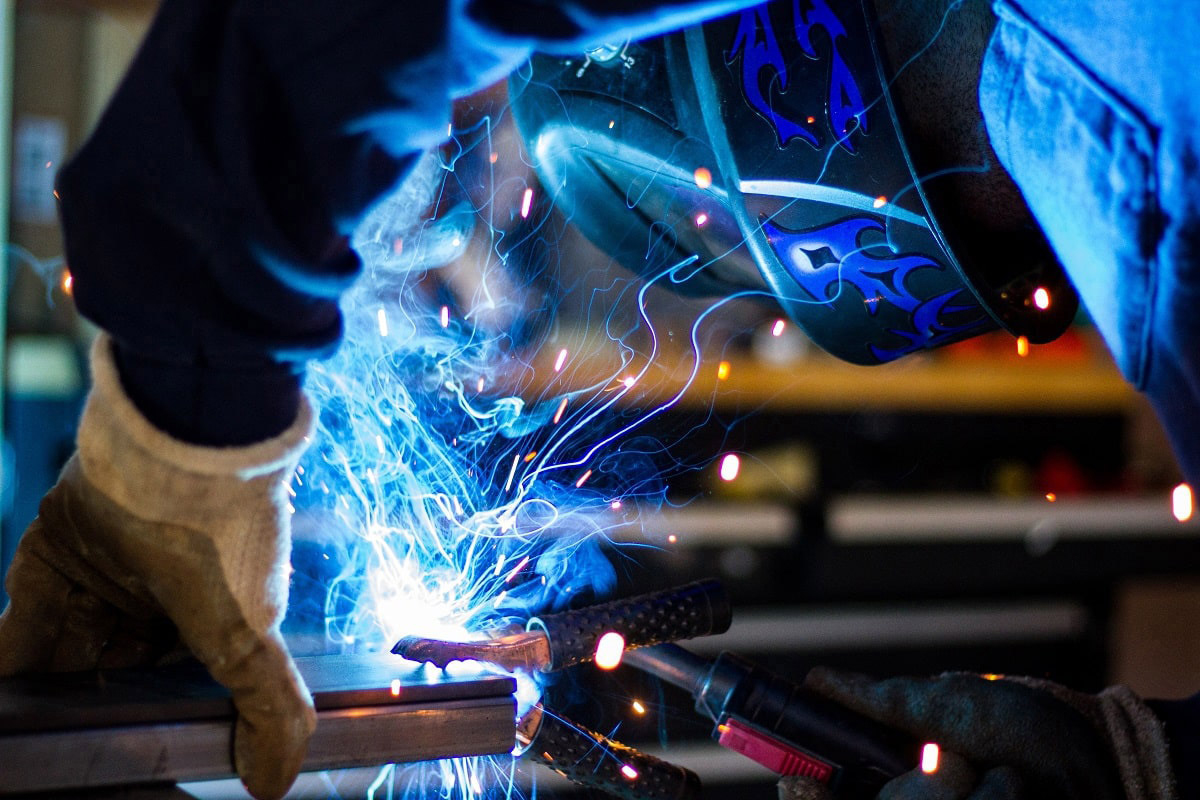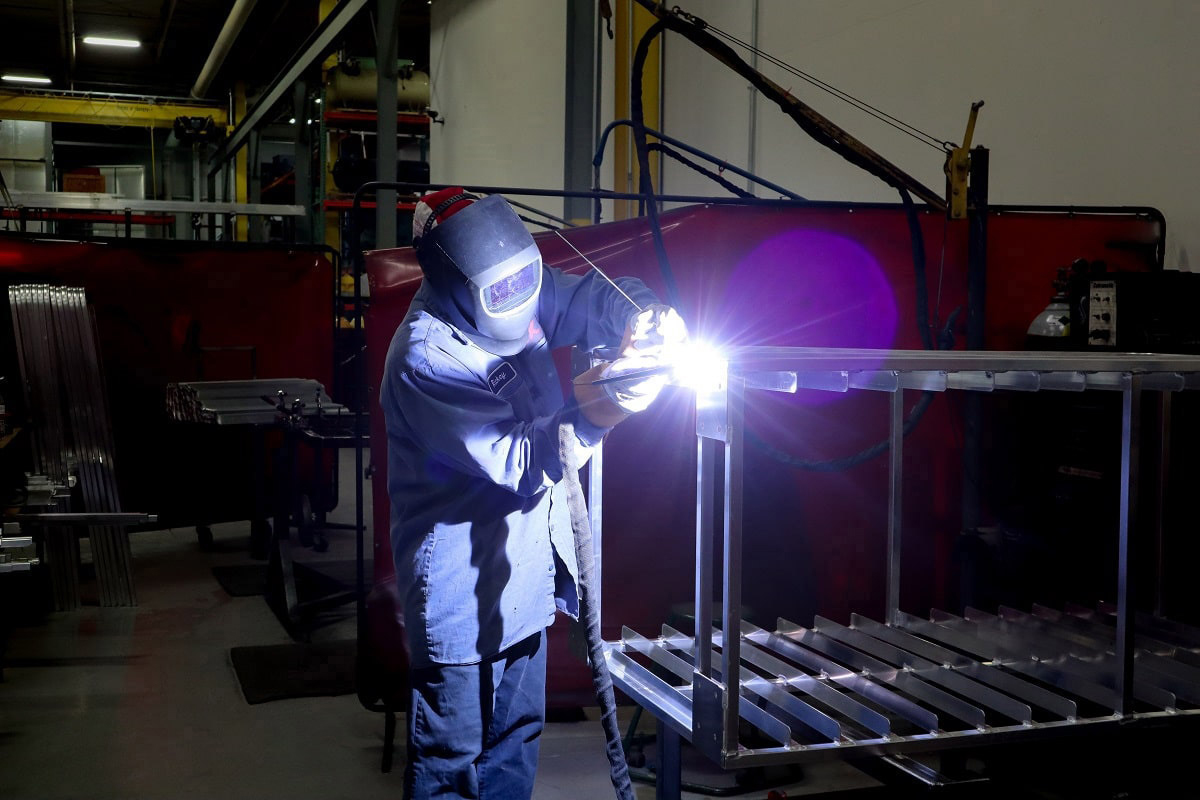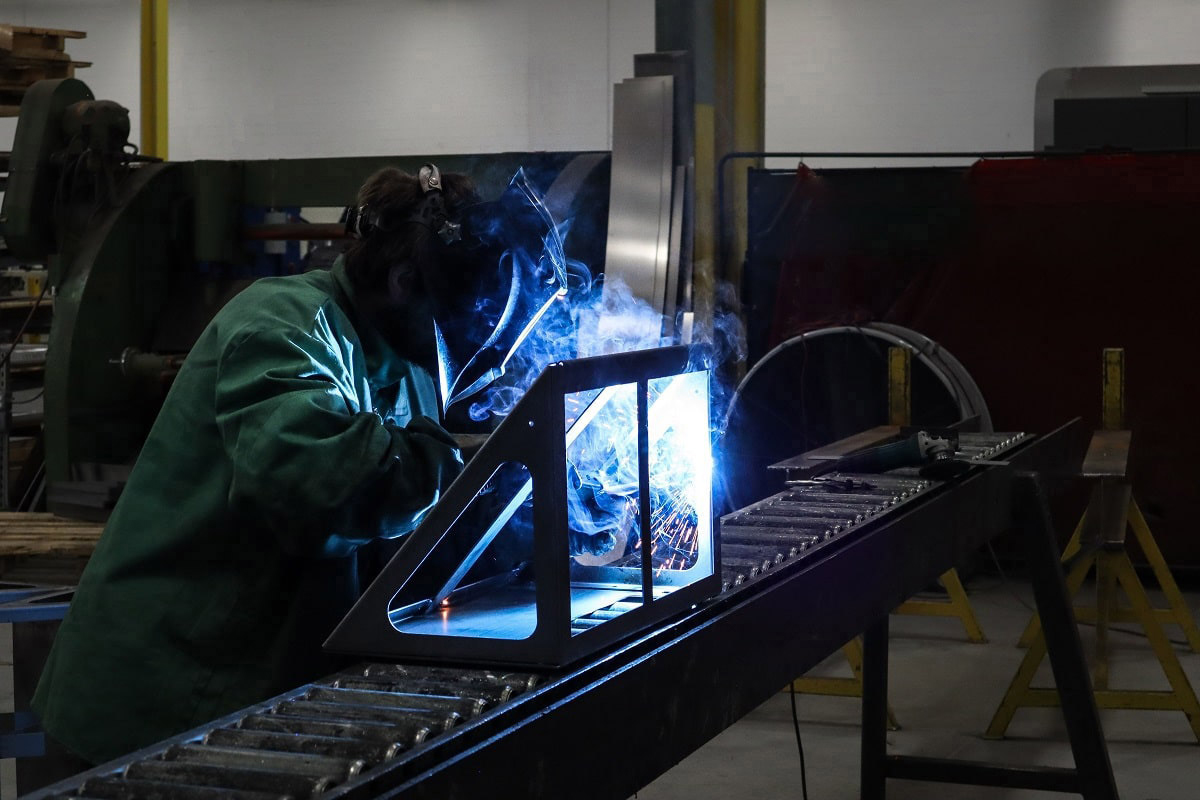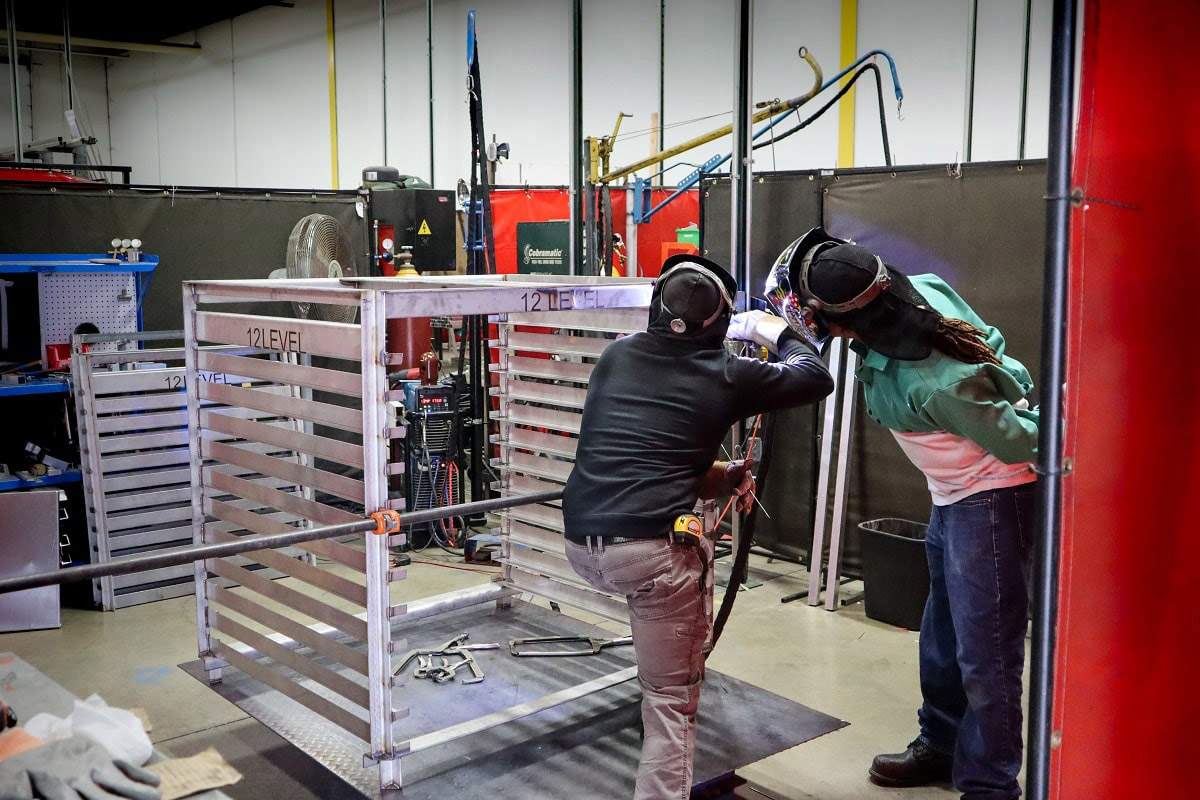
For many of the products that we produce at Schaumburg Specialties, we heavily rely on welding to join different metal pieces. However, ‘welding’ is a broad term that encompasses a variety of welding techniques with a wide range of applications.
Using the right welding technique based on the end goal of the product can help it turn out flawlessly. But if you choose a welding technique that isn’t ideal for the metal you’re using or the product outcome that you need, the chances are high that you’ll experience issues.
Weak joints and bonds, weld joint corrosion, or the inability to weld the materials altogether are some possibilities if you use the wrong welding technique. To avoid these frustrations, it’s important to use the right welding technique from the start.
Three of the most widely used welding techniques include metal inert gas (MIG), tungsten inert gas (TIG) welding, and shielded metal arc welding (SMAW), also referred to as stick welding. Each of these techniques has its unique pros, cons, and applications, all of which we will explore below. Here at Schaumburg Specialties, we primarily use the TIG and MIG processes to produce the cleanest and most precise welds.
Differences Between Stick, MIG, and TIG Welding Machines

To understand the applications of each type of welding, let’s first dive into how each of these welding machines operates.
How Does a Stick Welder Work?
Stick welding has the widest array of applications of the arc welding processes, making it the most common welding method in the United States. Through a fixed-length electrode and an electric power source, a stick welding machine can fuse an assortment of different metals.
It gets its name from the shape of the electrode, as it mimics a stick. This is a manual welding process that consists of a flux-coated consumable electrode in addition to a metal rod at the core.
Through either an alternating or direct current, an arc forms between the base metal and the electrode, heat is generated. The heat then melts the flux coating, giving off gas that serves as the protective bubble over the molten puddle while the process is taking place. The Flux coating on the stick also produces a layer of slag also a cover after the weld has cooled.
The metal rod, or the “stick” in stick welding, then begins to heat up. This results in a molten pool that becomes the weld. This type of welding is particularly customizable, as the welder can adjust the width and height of the weld beam.
The welder also has control over how deeply the weld penetrates and how much spatter is given off.
This type of welding is one of the more affordable welding options, and the equipment is easy to move. It is primarily used on iron and steel projects, and it can be used in all positions including flat, overheat, vertical, and horizontal. This process is often the most versatile in the repair of metal parts.
Other advantages of stick welding include a variety of electrode types, an easy cleaning process, and the fact that it is usable even in tight spaces.
Despite its long list of positives, there are also some downsides to using stick welding. Its relative speed compared with other types of welding is slow. It also produces more spatter, sparks, and heat than other welding processes. Finally, the slag should be removed when the welding process is over. And sometimes, this removal is difficult depending on the type of stick.
How Does a MIG Welder Work?
MIG welding, or metal inert gas welding, is an example of an arc welding process. It is a flexible, approachable type of welding that allows even novice welders to perform maintenance or repair welds in a variety of applications. From artists to farmers to DIY enthusiasts, MIG welding is effective on materials ½-inch thick to 24 gauges.
In the MIG welding process, the welder feeds a solid wire electrode through a welding gun and into the welding pool. As the welder pulls the trigger of the machine, an arc forms between the end of the wire electrode and the metal being worked on.
Here, two base materials are fused. The wire used serves a dual-purpose. One, to act as a heat source. And two, to act as a filler metal. Because a wire electrode is used in MIG welding, it is also often referred to as wire welding.
If the weld puddle is exposed to atmospheric elements, like oxygen, the result is a weak, porous weld. This is why MIG welding uses a protective shielding gas.
A variety of heat settings are available on MIG welds. Welders should be sure they are using the right amount of power to achieve the right amount of penetration without punching a hole in the metal. Once the welder can find this sweet spot, the process becomes simple and straightforward.
How Does a TIG Welder Work?
TIG welding, also known as tungsten inert gas welding and gas tungsten arc welding (GTAW), is another arc welding process. This type of welding is particularly notable for its integration of aluminum into the welding world, showing that it is a material that can be welded in a variety of ways.
During TIG welding, there is a tungsten electrode that produces the arc that provides the heat source to heat the metal that you are working on. This gas helps to protect the weld area from any damaging atmospheric elements.
Any filler metals used in TIG welding are added to the weld by hand, however, filler metals aren’t required in all TIG welding projects.
There are many advantages to using tungsten inert gas welding. All of its welds are clean and high-quality. Plus, it is capable of welding more metals than any other welding process, and it can weld in any position.
Differences Between Stick, MIG, and TIG Welding

Let’s now delve into stick vs. MIG vs. TIG welding, three of the most common types of welding that exist. While they each use electrical currents to generate heat for the base or bonding materials, they each have their applications that should be considered.
Metals
Certain types of metals are better suited for each welding process.
A variety of metals can be used in stick welding, most notably stainless or mild types of steel. Other possibilities include aluminum, cast iron, and other metals.
Next, MIG welding is so popular because it can handle nearly any type of metal that exists. Common examples of metals used in MIG welding include carbon steel, stainless steel, aluminum, copper, nickel, silicon bronze, and a host of other alloys. From thin metals to thick metals, MIG welding can handle it all.
TIG welding, on the other hand, is better suited for more refined projects. This means it’s best suited for thinner metals that do not require any filler to hold together. TIG welding is a great choice for making welds that require clean lines and high precision, such as aluminum and stainless steel. The TIG process is also a great choice for maintenance or repair projects as the heat is infinitely controllable.
Examples of metals that TIG welding can handle include aluminum, nickel alloys, stainless steel, weld steel, magnesium, copper, brass, and gold.
Ease of Control
Stick welding is best for outdoor welds. It requires a high level of experience to successfully operate a stick welding machine. It is a good choice for dirty or rusty metals.
MIG welding is referred to as the “hot glue gun of welding” for a reason. It is easy to learn compared with other types of welding, and with a few weeks of training, nearly anyone can pick it up.
All the welder needs to do is pull on the trigger to start or stop welding. The welder can even hold the welding gun in one hand to operate it.
TIG welding isn’t quite as simple to master, although it generally produces higher-quality welds compared with MIG welding. There is a non-consumable tungsten electrode in TIG welding that is required to heat the rod and the metal rod in the weld area.
The welder needs to be able to hold the filler rod in one hand and the torch in another while simultaneously using his or her foot to control the heat via a pedal on the ground. With so many moving parts, TIG welding can be a difficult process to master.
Cost
Cost is another important factor to consider between stick vs. MIG vs. TIG welding. Stick welding is relatively cheap and has a low initial investment cost compared with MIG and TIG welding.
The MIG welding process is notably faster than the TIG welding process, ultimately cutting back on how much it costs to use. The amount of time it takes to prepare the workstation for MIG welding is also less than TIG welding.
TIG welding is a bit costlier only due to its slower operational speed. It requires more preparation time as well, but it’s worth the wait for an incredible result.
Speed
Finding the right speed for stick welding takes some practice. Because it is more complicated, the welder needs to find a speed that is not too slow but not too fast to get his or her desired results.
MIG welds are capable of running for long periods at consistent speeds. This makes them ideal in many industrial applications that need a high production rate.
TIG welds are heavily detail-oriented, making them a slower choice.
When to Use Stick vs. MIG vs. TIG Welding

Understanding how each welding process is used can help you feel confident in your decision. Stick welding is applicable for a variety of projects and can be completed both inside and outside. It’s commonly used in industries such as manufacturing, shipbuilding, construction, mining, aerospace, field repair, steel fabrication, etc.
MIG welding is typically used in industries that require larger, thicker metal-based materials, such as in the automobile or home improvement industries. It is commonly used in sheet metal welding and to create large steel structures.
TIG welding can be used on non-ferrous materials such as nickel, titanium, copper, aluminum, and magnesium. It is most often used in industries such as food equipment and aerospace.
Conclusion
It’s nearly impossible to say which welding type is the best, as each has such unique characteristics and applications. If you’re interested in learning more about our fabrication processes at Schaumburg Specialties, feel free to reach out to our team!
Rely on our experts for assistance in developing the right equipment for your business. We even offer a lifetime guarantee on our products. Call us today at (855) 712-9299.